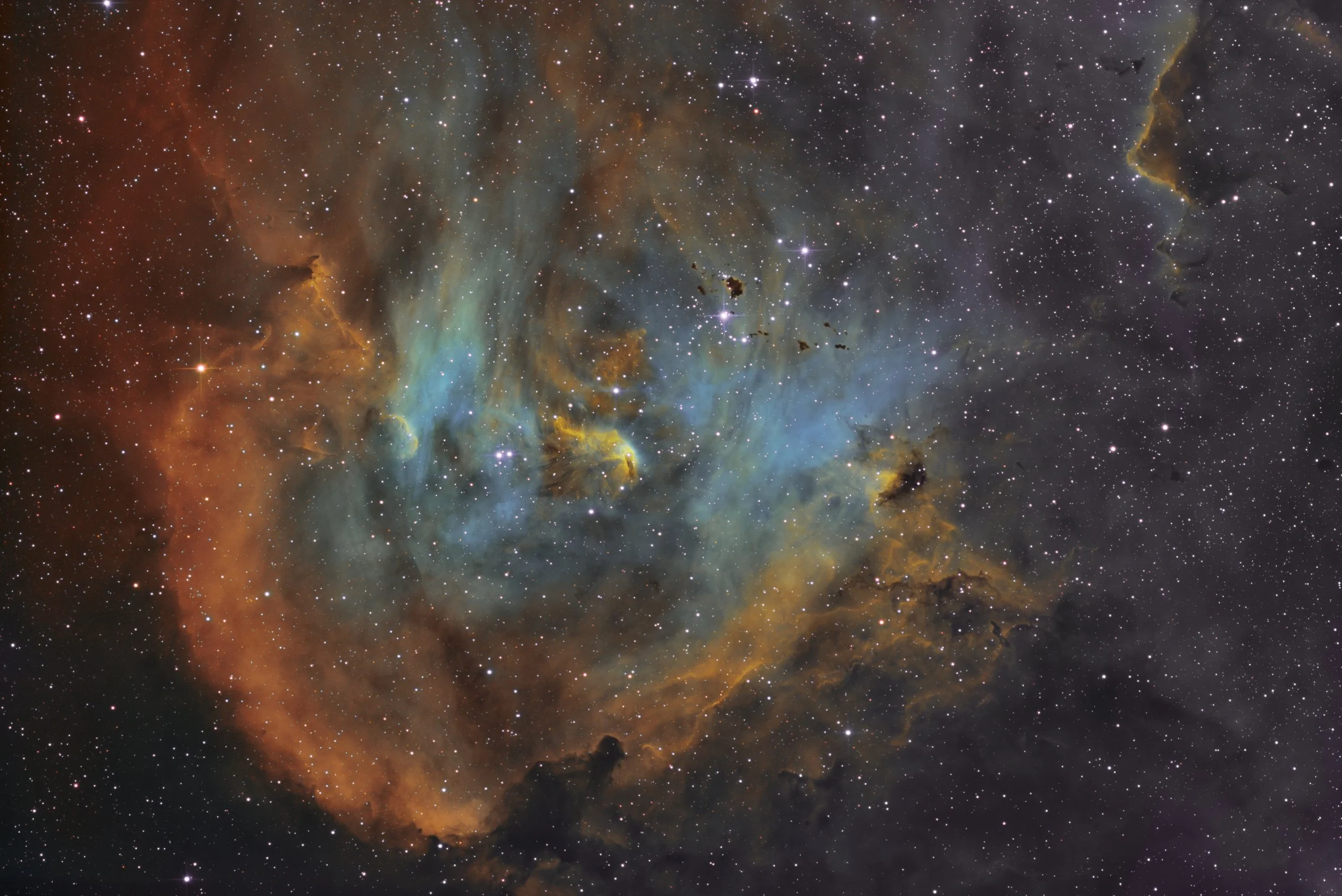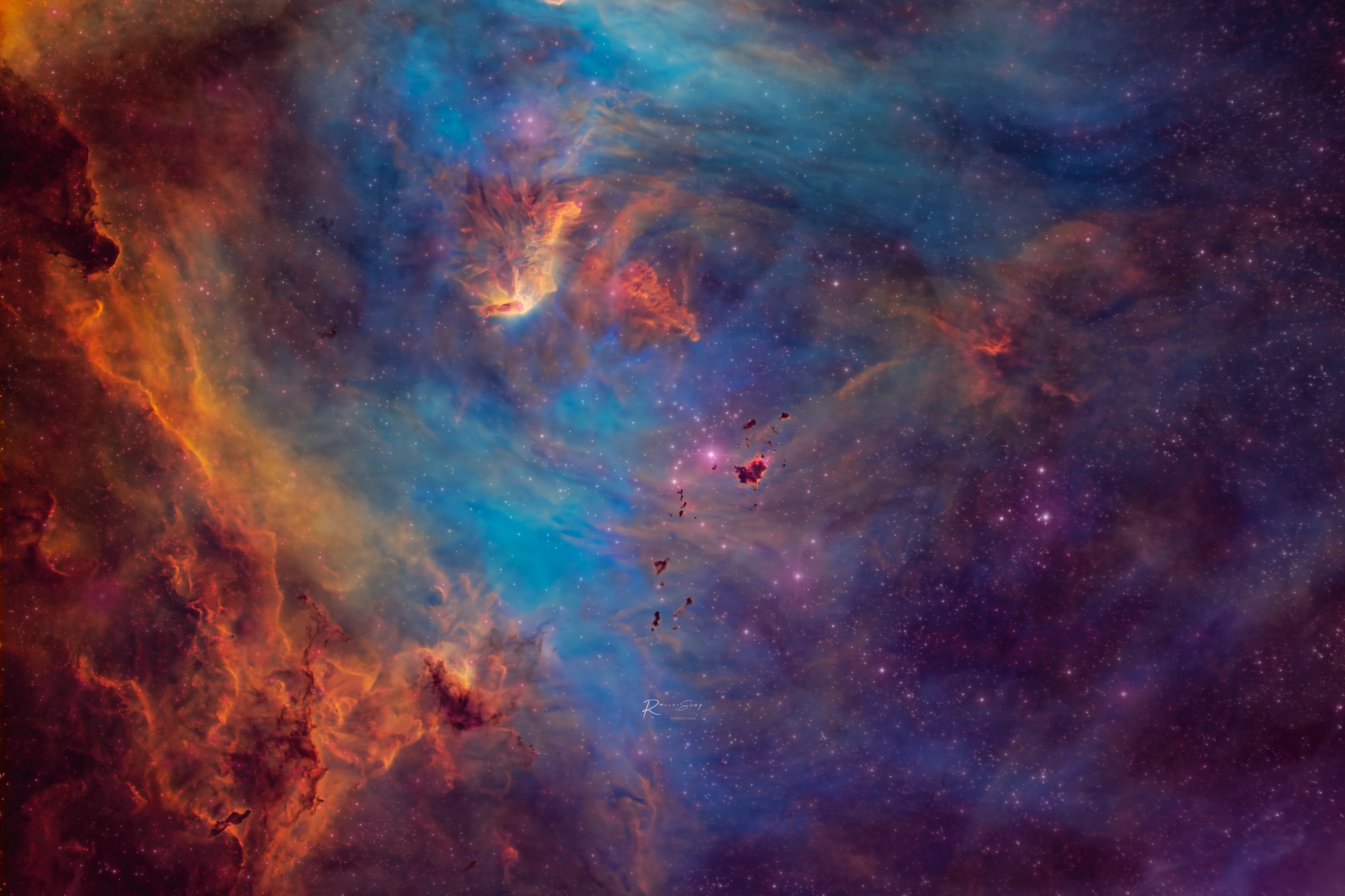
AAPOD2 Image Archives
Ic2944
Image Description and Details : Camara principal : ZWO ASI 294MM Pro Camara guia : ZWO ASI174MM mini Telescopio guia : Starguider 60/240 Filtros : Optolong 1.25" - Ha - OIII - SII Telescopio : Sky-Watcher 250 PDS Newton Montura : Ioptron Cem 70 Programas : Sharcap, PHD2, Pixinsight, photoshop, Sequence generator pro Lugar : Santiago de Chile Escala de cielo : Bortle 9 Detalle de adquisicion: Ha : 100x180" (5hr)(gain;120) - 20C bin 2x2 OIII : 60x180" (3r)(gain;120) - 20C bin 2x2 S2 : 60x180" (3Hr)(gain;120) - 20C bin 2x2
Copyright: Juan Pablo Moraga Coloma
Running Chicken Nebula
The Lambda Centauri Nebula or the λ Centauri Nebula, is an open cluster with an associated emission nebula found in the constellation Centaurus Narrowband image of IC 2948. Data courtesy of Telescope live.
Telescope CHI-1 Planewave CDK-24 Camera FLI ProLine PL9000 Location Location El Sauce Observatory, Rio Hurtado, Chile Date of observation Date of observation 25-12-2021 Filters Filters Astrodon 3nm narrowband
Processing PixInsight & PS
Copyright: Paul Swift
IC2944 The Running Chicken Nebula
Image Description and Details : 1) Telescope : Planewave CDK17, Camera : SBIG SXTL 11002 with AOX, Tracking : Paramount
2) Telescope : Riccardi-Honders 305, Camera : SBIG SXTL 16200, Tracking : Paramount
Location : Observatory EI Sauce, Chile / Australia
Total 44+ hours SHO data by CDK17 and RH305
Image processing : Pixinsight, Photoshop
Copyright: Image captured : Martin Pugh
Image processing : Rocco Sung
Running Chicken Nebula
Image Description and Details :
Taken from Brazilian skies on the nights of 13,14,15 of February 2021 (960´ minutes of total exposure time), this runaway chicken lies among two famous views: the Southern Cross and the Carina Nebula. Throughout this image the Running Chicken Nebula displays all it´s intricacy and so many shades of red. Gorgeous hydrogen alpha emissions. It is located about 6500 light years away in Centaurus.The dark globules in the center of the image are called Thackeray globules, after the South African astronomer Andrew David Thackeray, who first observed them in 1950. These regions, when viewed through infrared telescopes, reveal a stellar nursery, a region of star formation. A closer look shows that the larger dark globules are formed by two separate but overlapping parts, giving the impression of being one. These two clouds together have a mass equivalent to 15 times the mass of the Sun!Globules appear to be fractured due the hostile environment in which they are immersed. Since young and hot stars energize and heat up the emission nebula, the globules get dissipated by this harsh environment, preventing them from contracting and becoming massive stars.This remarkable celestial landscape spreads over an estimated field of 60,000 light years..[ Tech Specs ].The final image is the result of a four panel mosaic, each containing:H-Alpha: 30x300" (each panel)RGB: 6x300 (each channel and panel)Total Exposure Time: 960' minutes;.Telescope: TS115/632 (with reducer)Camera: ZWO ASI 1600mm ProFilters: HALPHA OPTOLONG 6,5nm / RGB AstrodonGuide: OAG QHY5LMount: CEM60Capture Softwares: APT, SKYTECH X, PHD GUIDINGProcessing software: Pixinsight | Lightroom.Image taken at Serra Alta, Santa Catarina (SC), Brazil
Copyright: Carlos `Kiko` Fairbairn, Maicon Germiniani and Gabriel R. Santos





